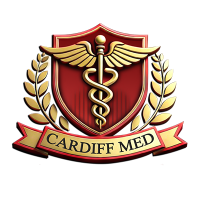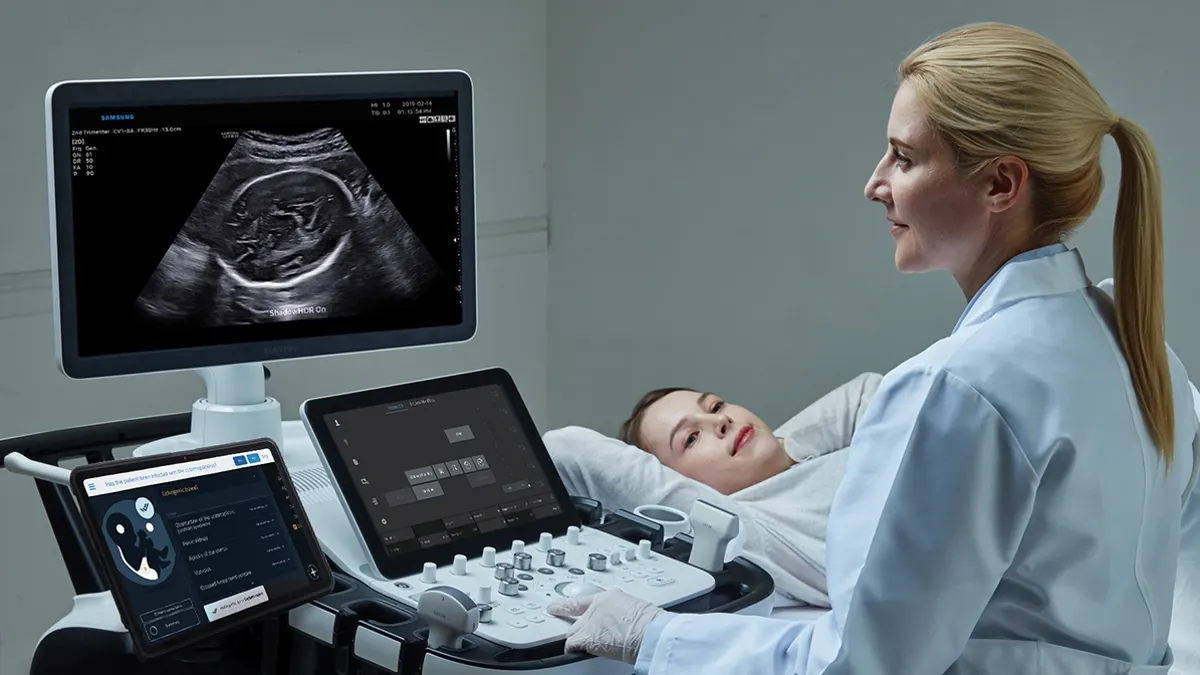The Importance and Applications of Medical Diagnostic Ultrasound
Medical diagnostic ultrasound is one of the most significant tools in modern healthcare. It allows physicians to view and assess the internal organs, tissues, and blood vessels of the body in real time, aiding in the diagnosis and management of various medical conditions. Often referred to as sonography, ultrasound imaging uses high-frequency sound waves to create detailed images.
Medical diagnostic ultrasound’s non-invasive and safe nature has made it a critical part of healthcare, particularly in obstetrics, cardiology, musculoskeletal health, and many other fields. This article aims to explore the fundamentals, benefits, applications, advancements, and career opportunities in the field of ultrasound, with a focus on specialized medical diagnostic ultrasound courses and training opportunities like ultrasound diplomas.
What is Medical Diagnostic Ultrasound?
Medical diagnostic ultrasound is a non-invasive imaging technique that uses sound waves to create images of internal body structures. Unlike traditional imaging methods, such as X-rays or CT scans, which use ionizing radiation, ultrasound is a safer and more versatile alternative. Ultrasound probes emit sound waves that bounce off tissues and organs inside the body, and the reflected echoes generate real-time images displayed on a monitor.
This imaging method is especially useful for examining the heart, liver, kidneys, blood vessels, and reproductive organs without requiring surgery. Ultrasound aids in diagnosing conditions such as tumours, cysts, infections, blood clots, and fetal development abnormalities. Its non-invasive nature and lack of radiation make medical diagnostic ultrasound an essential tool in patient care.
Key Benefits of Ultrasound Imaging
Non-Invasive:
Ultrasound provides a non-invasive and comfortable way to obtain internal images, making it a preferred imaging technique for patients. This feature is crucial as it avoids the need for more invasive procedures, reducing patient discomfort and recovery times.
Safe:
Unlike other imaging techniques that rely on radiation, ultrasound is a completely safe method of imaging. This is especially important in certain patient groups, such as pregnant women and young children. As ultrasound does not use ionizing radiation, it poses no known risks to the patient, making it ideal for monitoring fetal development during pregnancy.
Real-Time Imaging:
Ultrasound provides real-time imaging, allowing healthcare providers to assess the movement of internal organs and monitor processes like blood flow. This is particularly beneficial when guiding certain medical procedures, such as biopsies or injections, as it allows for immediate adjustments during the procedure.
Cost-Effective:
Compared to other imaging technologies like MRI and CT scans, ultrasound is relatively affordable. Its lower cost makes it more accessible for healthcare providers, especially in under-resourced settings. It allows for timely diagnosis without straining hospital budgets.
Portable:
These portable devices enable bedside imaging, support emergencies, and provide diagnostic capabilities in remote areas where traditional imaging equipment may not be available.
Common Applications of Ultrasound in Medicine
Obstetrics and Gynaecology:
One of the most widely recognized uses of ultrasound is in obstetrics, where it plays a crucial role in monitoring fetal development and ensuring maternal health. This non-invasive imaging technique provides essential insights into the baby’s size, position, and overall well-being. Additionally, it helps detect complications such as multiple pregnancies, abnormal fetal positioning, and structural anomalies, enabling early intervention and better prenatal care.
Cardiology:
Ultrasound is vital in cardiology, particularly in echocardiography, where it provides detailed images of the heart’s structure and function. This non-invasive technique helps assess heart chambers, valves, and blood flow, aiding in the diagnosis and management of conditions such as heart disease, valve disorders, and congenital abnormalities.
This imaging technique helps assess the heart’s size and shape, the condition of the heart valves, and the presence of fluid around the heart. It also aids in evaluating blood flow through the heart’s chambers and valves, helping diagnose conditions like heart disease, valve dysfunction, and congenital heart defects.
Abdominal Ultrasound:
Ultrasound is widely used to examine abdominal organs, including the liver, gallbladder, pancreas, spleen, and kidneys. It serves as a valuable diagnostic tool for detecting conditions such as liver disease, kidney stones, and gallstones. Additionally, ultrasound can identify tumors, cysts, and infections within abdominal organs, making it an essential component of routine diagnostic imaging.
Musculoskeletal Ultrasound:
Musculoskeletal ultrasound is used to assess muscles, tendons, ligaments, and joints, making it a valuable tool for diagnosing conditions such as tendonitis, ligament sprains, joint inflammation, and musculoskeletal injuries. Additionally, it provides real-time imaging to guide procedures like joint injections and aspirations, ensuring precision and effectiveness in treatment.
Vascular Ultrasound:
Vascular ultrasound is used to evaluate blood flow in veins and arteries. This imaging technique helps detect issues like blood clots, blocked arteries, and aneurysms. Colour Doppler ultrasound, a specialized form of vascular ultrasound, enables visualization of blood flow within vessels, helping identify abnormalities like narrowing or turbulence in blood vessels.
Pediatric Ultrasound:
Ultrasound is a preferred imaging technique for children due to its non-invasive nature. It is commonly used to assess conditions like hip dysplasia, brain abnormalities, and digestive system issues in infants and young children. Given the safety of ultrasound, it is an excellent choice for diagnosing paediatric conditions without subjecting children to radiation.
Advancements in Ultrasound Technology
Ultrasound technology has come a long way in recent years, with significant improvements in image quality, portability, and diagnostic capabilities. One of the most notable innovations in ultrasound imaging is 3D/4D ultrasound, which allows healthcare providers and parents to view a three-dimensional image of an unborn child. This technology has revolutionized obstetric imaging, allowing families to see their baby in more detail than ever before.
Elastography is a significant advancement in ultrasound technology that assesses tissue stiffness, making it valuable for diagnosing liver disease and certain cancers. By evaluating tissue elasticity, this technique helps detect abnormal growths or scarring that may not be visible with standard imaging methods.
Another groundbreaking development is fusion imaging, which combines ultrasound images with other imaging modalities, such as MRI, to enhance diagnostic accuracy and provide a more comprehensive assessment of medical conditions.
By fusing ultrasound with MRI, healthcare providers can obtain more detailed and precise images of internal structures, leading to more accurate diagnoses.
The development of portable ultrasound devices has also had a significant impact on the accessibility of ultrasound imaging. These devices are smaller, lighter, and more affordable than traditional ultrasound machines, allowing healthcare providers to use ultrasound at the point of care.
This is especially beneficial in rural or emergency settings, where immediate imaging is needed, and access to large imaging equipment may be limited.
Training in Medical Diagnostic Ultrasound
As ultrasound technology advances, there is a growing demand for professionals who can operate ultrasound equipment and interpret the images accurately.
Medical diagnostic ultrasound professionals play a crucial role in the healthcare system by ensuring the efficient performance of ultrasound procedures and the accurate interpretation of images.
For individuals interested in pursuing a career in ultrasound, there are a variety of educational opportunities, including medical diagnostic ultrasound courses. These courses provide both theoretical knowledge and practical skills required to operate ultrasound machines and interpret diagnostic images. Graduates of ultrasound programs are in high demand across multiple healthcare settings, including hospitals, private practices, and diagnostic imaging centre’s.
Medical diagnostic ultrasound courses are available both in-person and online, with many institutions offering flexible online programs in Pakistan and other countries. These courses are designed to accommodate working professionals, allowing them to study at their own pace. Online learning is particularly beneficial for individuals who may not have access to traditional in-person training, making ultrasound education more accessible and convenient.
The 6-Month Diploma in Medical Diagnostic Ultrasound by Cardiff MED Institute
The Cardiff MED Institute is a leading institution offering comprehensive training in medical diagnostic ultrasound. Its 6-month diploma program provides students with both theoretical knowledge and hands-on experience in ultrasound imaging. The curriculum covers a wide range of applications, including abdominal, obstetric, pediatric, musculoskeletal, and vascular ultrasound.
Students gain practical skills in operating ultrasound machines, interpreting images, and producing diagnostic reports. The program integrates foundational concepts with advanced techniques, ensuring a well-rounded education in ultrasound diagnostics.
The strong emphasis on real-world clinical experience ensures that graduates are well-prepared to pursue careers in ultrasound imaging and contribute to advancements in medical diagnostics.
Conclusion: A Growing Field with Promising Career Prospects
The field of medical diagnostic ultrasound is rapidly evolving, offering diverse career opportunities. As the demand for skilled ultrasound professionals grows, individuals who complete diploma programs or online ultrasound courses in Pakistan gain the expertise needed for success. Healthcare sectors highly value proficiency in performing diagnostic imaging and interpreting ultrasound results, making this a promising career path for aspiring medical professionals.
Whether you choose to specialize in obstetrics, cardiology, musculoskeletal health, or vascular imaging, the possibilities are vast. Enrolling in an ultrasound program equips you with the knowledge and skills needed to make a meaningful impact in the healthcare industry.
For more information about the 6-month diploma in medical diagnostic ultrasound offered by Cardiff MED Institute, or to inquire about ultrasound courses in Pakistan. contact the institute today at +92 300 066 7712 or visit their website at www.cardiffmed.com.










